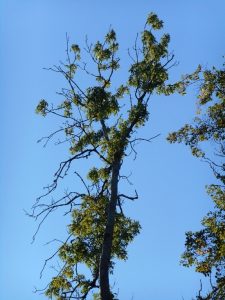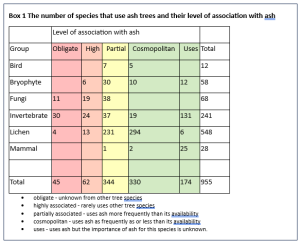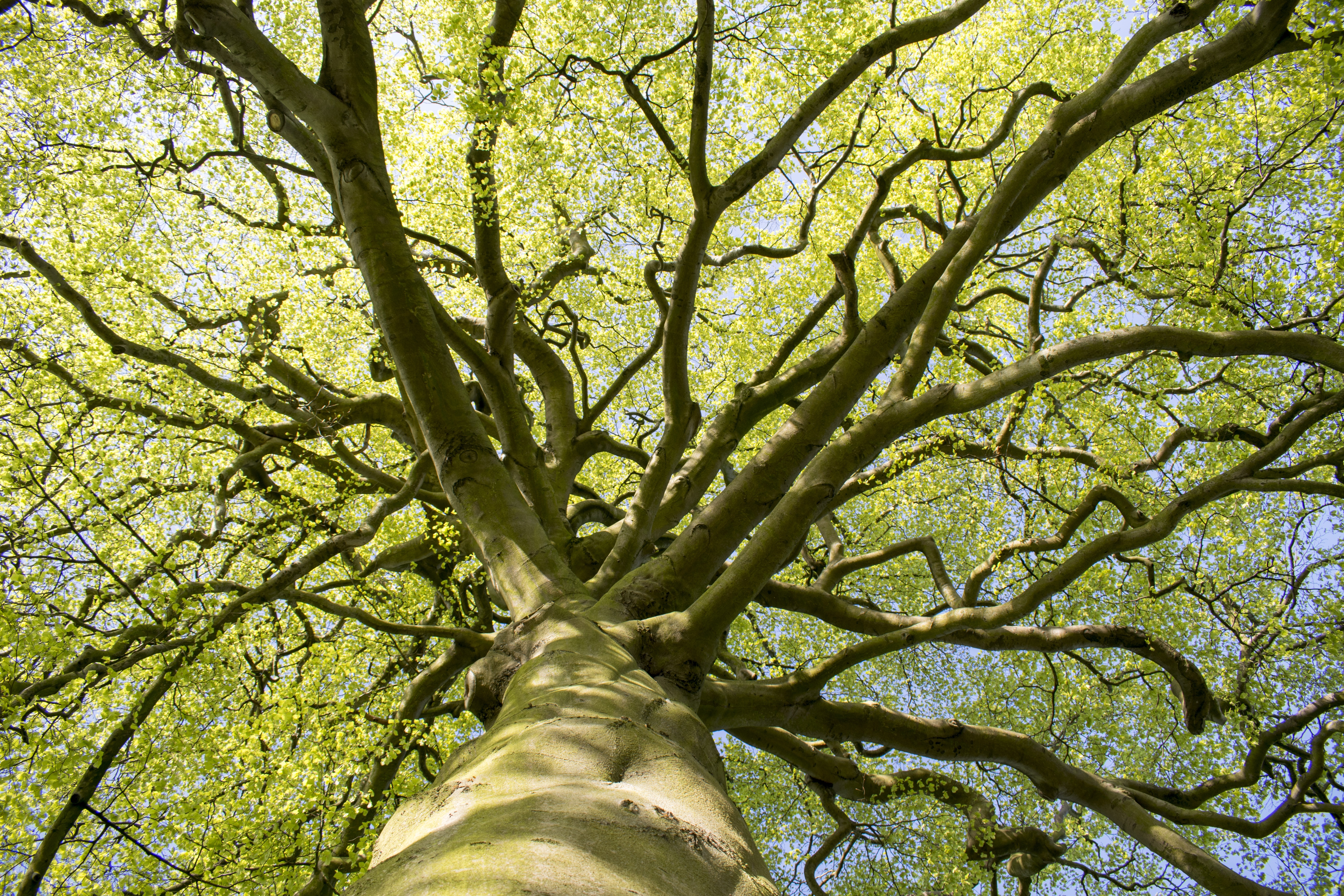I grew up without Elm. What is my grandson growing up without? – by Dr Ruth Mitchell
Dr Ruth Mitchell, Biodiversity and Ecosystem group leader at the James Hutton Institute shares the implications of the decline of a particular tree species and what the future might hold, ahead of her talk at CIEEM’s upcoming Scottish Conference: The Role of Trees in a Sustainable Future
Dutch elm disease arrived in the UK in the 1960s. Growing up as a child in southern England I wasn’t even really aware of losing such a tree. I just accepted the fact that a tree called Elm was dying out. To me it was “just one of those things that happened”, I didn’t really think about the consequences. Today, those living north of Inverness are only just seeing the impact of this disease and may still be lucky enough to see mature Elm trees, however many people may never have seen a mature Elm.
The profile of tree diseases has risen up the public consciousness in the last decade since the arrival of Ash dieback, Hymenoscyphus fraxineus.  More people are now aware of dead Ash trees. However, we rarely stop and think about what the wider consequences of a decline in a particular tree species are. Does this drive declines in other species that utilise the tree?
More people are now aware of dead Ash trees. However, we rarely stop and think about what the wider consequences of a decline in a particular tree species are. Does this drive declines in other species that utilise the tree?
Our work on Ash has shown that 955 species are associated with Ash trees in the UK (Table 1). Of these, 45 species were identified as being obligate on Ash (unknown from other tree species) and a further 62 species as being highly associated (rarely uses other tree species), see Box 1. This means that not only are we seeing a decline in one of our most common tree species, but that Ash dieback could drive declines in a whole range of other species.
Box 1. The number of species that use Ash trees and their level of association with Ash

- obligate – unknown from other tree species
- highly associated – rarely uses other tree species
- partially associated – uses ash more frequently than its availability
- cosmopolitan – uses ash as frequently as or less than its availability
- uses – uses ash but the importance of ash for this species is unknown.
So, it’s not just a question of what trees we are losing but what other species too. Our baseline for biodiversity is getting lower and lower, a case of shifting baselines. Not only will my Grandson grow up with Ash trees as a relatively uncommon tree but there might be a whole range of Ash-associated species that might be a lot rarer in his lifetime than in mine.
Fortunately, of course, many species use multiple tree species and can use trees other than Ash. However, those trees may also be under threat. There has been an exponential increase in the number of tree diseases establishing over the last century. Just thinking about Oak, we now have Oak Processionary Moth, Acute Oak Decline and Chronic Oak Decline. A decline in Oak would also have cascading biodiversity impacts. We need to consider the cumulative impacts of these tree diseases not just on trees but on our biodiversity. How resilient are our native woods and their associated biodiversity to multiple tree diseases? This is something I’ll be discussing during my talk at the Scottish CIEEM conference in October.
Before you leave this blog, renaming me as Dr Doom, there are of course things we can do to make our woods more resilient. Generally, a more diverse community is thought to be more resilient because if one species is lost, then there are other species in the community that can fill their functional role. This is what we are studying in a new project called DiversiTree. DiversiTree aims to increase resilience of current and future woodlands by working across a range of scales, from microbes to minds, to understand the methods to, and the impacts of, diversifying tree species composition. DiversiTree addresses four knowledge gaps related to the diversification of woodlands:
1) How do stakeholders understand forest diversity, their diversification strategies, and their visions and ambitions for diverse future forests?
2) Are the microbes found on the leaves of trees more diverse in woodlands with mixed tree species and does this help trees to better defend themselves against diseases?
3) How may diversification of tree species within a wood allow the continued support of woodland biodiversity?
4) How do we implement and communicate management strategies to increase woodland resilience?
In addition to making our woodlands more resilient to diseases we also need to ensure that in our efforts to restore woodlands and create new woods we don’t accidently spread diseases. In all habitat restoration and creation activities appropriate risk assessments and biosecurity protocols are critical and recent research suggests that in many cases this is not being carried out. At the Scottish CIEEM conference we’ll be presenting more, both about the DiversiTree project and biosecurity best practice for conservation.

So, although my Grandson may grow up with fewer ash trees and their associated species in the landscape, I hope he will also grow up with a greater diversity of tree species in our woods and forests and surrounded by a greater public awareness of the importance of reducing the risks of spreading plant diseases.
Dr Ruth Mitchell (Not Dr Doom!)
About the Author
Dr Ruth Mitchell led the first work studying the impacts of ash dieback on wider biodiversity and followed this by studying the impacts of a decline in Oak on biodiversity. She is the project lead for the UKRI Treescapes project DiversiTree, which aims to understand how increasing tree species diversity can increase resilience. Ruth is a member of the Defra’s Trees and Woodlands Science Advisory Group and NatureScot’s Science Committee.
Ruth will be speaking at our upcoming Scottish Conference: The Role of Trees in a Sustainable Future
Blog posts on the CIEEM website are the views and opinions of the author(s) credited. They do not necessarily represent the views or position of CIEEM. The CIEEM blog is intended to be a space in which we publish thought-provoking and discussion-stimulating articles. If you’d like to write a blog sharing your own experiences or views, we’d love to hear from you at SophieLowe@cieem.net.
